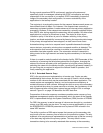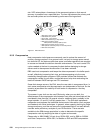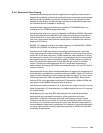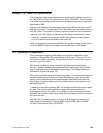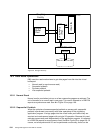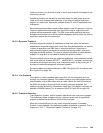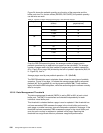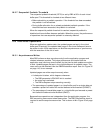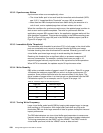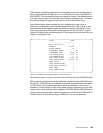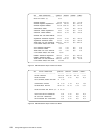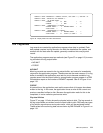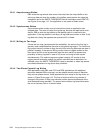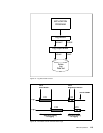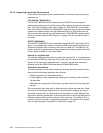
DB2 I/O Operations 107
10.2.7 Sequential Prefetch Threshold
The sequential prefetch threshold (SPTH) is set by DB2 at 90% of each virtual
buffer pool. This threshold is checked at two different times:
• Before scheduling a prefetch operation. If the threshold has been exceeded,
the prefetch is not scheduled.
• During buffer allocation for an already-scheduled prefetch operation. If the
threshold has been exceeded, the prefetch is canceled.
When the sequential prefetch threshold is reached, sequential prefetch is
disabled until more buffers become available. When this occurs, the performance
of operations that use sequential prefetch is adversely affected.
10.3 Data Write Operations
When an application updates data, the updated pages are kept in the virtual
buffer pool. Eventually, the updated data pages in the virtual bufferpool have to
be written to disk. Write operations can be either asynchronous or synchronous,
with the execution of the unit of work.
10.3.1 Asynchronous Writes
Most DB2 writes are done asynchronously from the application program and
chained whenever possible. This helps performance and implies that the
application may have long since finished, by the time its data updates are written
to disk. Updated pages are kept in the virtual bufferpool for possible reuse. The
reuse ratio can be obtained from the DB2PM statistics report. See
J in Figure 35
on page 110, for an example.
Updated pages are written asynchronously, when:
• A checkpoint is taken, which happens whenever:
• The DB2 parameter LOGLOAD limit is reached.
• An active log is switched.
• The DB2 subsystem stops executing normally.
• The percentage of updated pages in a virtual buffer pool for a single data set
exceeds a preset limit called the vertical deferred write threshold (VDWQT).
• The percentage of unavailable pages in a virtual buffer pool exceeds a preset
limit called the deferred write threshold (DWQT).
Because these operations are independent from the application program, the
DB2 accounting trace cannot show these writes. The DB2 PM statistics report is
required to see the asynchronous writes. This is shown in
H in Figure 35 on page
110.



